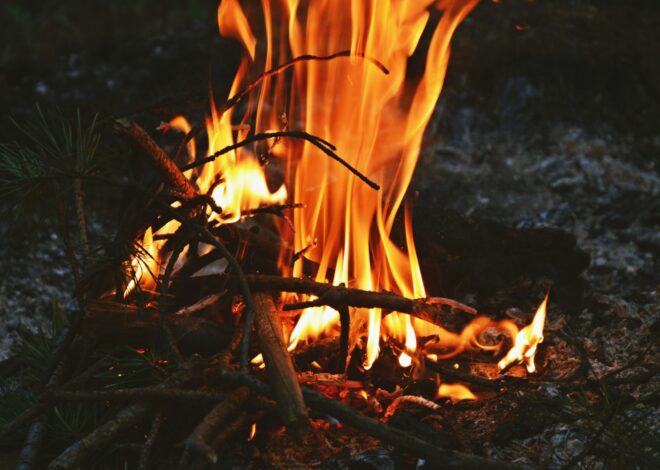
Finding Water Sources For Survival
Welcome to our comprehensive guide on finding water sources for survival. Water is life. It’s a fundamental necessity, especially in survival situations where every drop counts. Imagine finding yourself lost in the wilderness or caught in an unexpected emergency.
Your first instinct might be to find food or shelter, but without water, your chances of survival dwindle rapidly. Understanding how to locate and secure reliable water sources can mean the difference between life and death.
Whether you’re prepping for a camping trip or just want to be ready for any situation that may arise, knowing where to find clean drinking water is essential. Let’s explore the various methods of discovering these vital resources, ensuring you stay hydrated when it matters most.
Importance of Water in Survival Situations
Water is essential for life, especially in survival situations. The human body can only last a few days without it. In extreme circumstances, dehydration sets in quickly, leading to confusion and fatigue. Staying hydrated enhances physical performance.
It keeps your energy levels up when you’re navigating unfamiliar terrain or building shelter. Even mild dehydration can impair your judgment. Moreover, water regulates body temperature and supports vital functions like digestion and circulation. When faced with stress or exertion, the need for hydration intensifies.
Finding clean water sources can be the difference between life and death in an emergency scenario. Prioritizing water procurement should always be at the forefront of any survival plan. Every moment counts when you’re facing dire conditions—understanding the importance of water becomes paramount for enduring challenging environments.
Identifying Potential Water Sources
When faced with a survival situation, knowing how to identify potential water sources is crucial. Look for signs of life; animals and vegetation often lead you to water. Streams and rivers are obvious choices. The movement of the water indicates freshness.
Pay attention also to the terrain; valleys tend to collect rainwater, creating puddles or small ponds. Natural depressions in the ground can trap moisture after rainfall, serving as temporary reservoirs. Additionally, consider checking under rocks or fallen trees where condensation may accumulate.
Don’t overlook human-made structures like abandoned wells or cisterns. They can be hidden gems in your quest for hydration. Seasonal changes affect available sources too. Familiarize yourself with your surroundings before an emergency strikes; this knowledge can make all the difference when you’re actively searching for that vital resource.
Natural Sources of Clean Drinking Water
Natural sources of clean drinking water can be found in various environments. Streams, rivers, and lakes often provide accessible options. Freshwater springs are particularly valuable; they emerge from the ground, delivering clear water that is usually safe to drink.
In forested areas, look for standing pools or small ponds. These bodies of water may require purification but can serve as vital resources in desperate situations. Rainwater collection is another method worth considering. It’s gathered directly from precipitation and can be stored effectively with proper containers.
When seeking natural sources, always assess the surrounding environment. Water near animal trails or waste may be contaminated. Staying vigilant about your surroundings ensures you choose wisely when gathering this precious resource.
How to Purify Water for Safe Consumption
Purifying water is crucial for ensuring safe consumption in survival situations. There are several methods you can use to eliminate harmful contaminants. Boiling is one of the most effective techniques. Bringing water to a rolling boil for at least one minute kills pathogens, making it safe to drink.
If boiling isn’t an option, consider chemical purification. Water purification tablets containing iodine or chlorine can effectively neutralize bacteria and viruses. Follow the instructions carefully for optimal results. Filtration systems are another reliable choice.
Portable filters can remove sediments and microorganisms from water sources, providing clean drinking water on the go. Solar disinfection (SODIS) is an innovative method using sunlight’s UV rays. Fill clear plastic bottles with water and leave them in direct sunlight for six hours.
This process will help kill many germs present in untreated water. Always remember that knowing how to purify your water could save your life when resources are scarce.
Emergency Methods for Collecting Water
When you’re in a survival scenario, quick thinking can save your life. Emergency methods for collecting water are crucial to staying hydrated. One effective technique is using a solar still. Dig a pit in the ground and place a container at the bottom. Cover it with clear plastic, ensuring it’s sealed around the edges to trap moisture from the soil and plants above.
The sun will create condensation, which collects in your container. Another option is to collect dew or rainwater directly. Use clean cloths or tarps to gather moisture early in the morning when dew forms on surfaces. You can wring out these items into containers for drinking water.
If you find yourself near vegetation, look for sap-producing trees like pines or maples. Tapping them carefully can yield drinkable sap that hydrates while providing energy too. Stay alert and adaptable; creativity often leads to unexpected solutions when resources are scarce.
Tips for Finding Reliable Water Sources
When searching for reliable water sources, your instincts play a crucial role. Trust your intuition about where water might be present. Look for wildlife activity. Animals often know where to find water. If you see birds, deer, or other animals heading in a specific direction, follow their trail.
Next, examine the landscape. Valleys and low-lying areas tend to collect moisture. Streams and rivers can also carve paths through terrain that indicate nearby water sources. Consider vegetation as well; lush green plants are usually signs of available moisture underground.
Cattails and willows thrive near water bodies. Don’t neglect man-made structures either—abandoned wells or tanks might still hold some liquid gold if they haven’t dried up completely. Always carry basic tools like a map or compass to help navigate towards potential sources efficiently.
Alternative Methods for Obtaining Water
When conventional sources are scarce, exploring alternative methods for obtaining water becomes crucial. One interesting technique is using dew collection. In the early morning, set up a clean cloth or tarp in an open area to capture moisture from the air as it condenses.
Another option involves digging shallow holes in sandy soil. The earth retains moisture well and can yield small amounts of water after several hours. Covering the hole with plastic can enhance evaporation, allowing you to collect more liquid.
If you’re near vegetation, consider sap extraction from trees like maples or birches. This method provides hydration along with nutrients. Utilizing solar stills can be effective in arid environments. By creating a simple setup that traps evaporated moisture, you can distill impurities and harvest drinkable water over time.
The Dangers of Dehydration
Dehydration can be a silent killer, creeping up on you when you least expect it. It’s not just thirst; it’s a serious threat that affects your body and mind. When water levels drop, your energy plummets. You may feel fatigued and dizzy. Concentration wanes, making simple tasks seem monumental.
Severe dehydration leads to headaches and dry skin. Your heart rate increases as your body struggles to maintain balance. In extreme cases, confusion sets in—an alarming sign that immediate action is needed. Don’t underestimate the power of hydration during survival situations.
A lack of water impacts decision-making abilities at critical moments when clarity is essential for safety and survival. Stay aware of how much you’re drinking, especially in hot or strenuous conditions—the consequences could be dire if ignored.
Rainwater Harvesting Techniques
Rainwater harvesting is a practical and sustainable method for collecting water. It involves capturing rain as it falls, allowing you to store this valuable resource for later use. Start by choosing the right collection surface. Rooftops work well because they are clean and provide ample space.
Ensure your roof material is safe for drinking water if that’s your goal. Next, install gutters that channel rain into storage containers, like barrels or tanks. Make sure these containers are covered to prevent debris and pests from contaminating the water. Consider using filters to remove any impurities before storing the collected rainwater.
Simple mesh screens can keep out larger particles while more advanced systems handle finer sediments. Regular maintenance is essential too—clean gutters periodically to ensure optimal flow and check storage tanks for signs of algae growth or leaks. This proactive approach will help secure a reliable source of fresh water when needed most.
Conclusion: Always Be Prepared and Stay Hydrated
Being prepared is essential when it comes to survival. Water is a critical resource that can be the difference between life and death in emergency situations. Understanding how to locate water sources, recognizing natural options, and knowing purification methods are all invaluable skills.
Remember, hydration should always be a priority. The risks associated with dehydration can escalate quickly, leading to severe health consequences. By employing techniques such as rainwater harvesting and exploring various alternative methods for obtaining water, you enhance your chances of survival.
Stay vigilant and proactive about your hydration needs. Equip yourself with knowledge that could save your life or the lives of others in dire circumstances. Always prioritize finding reliable water sources for survival; it’s an investment in your safety and well-being.



